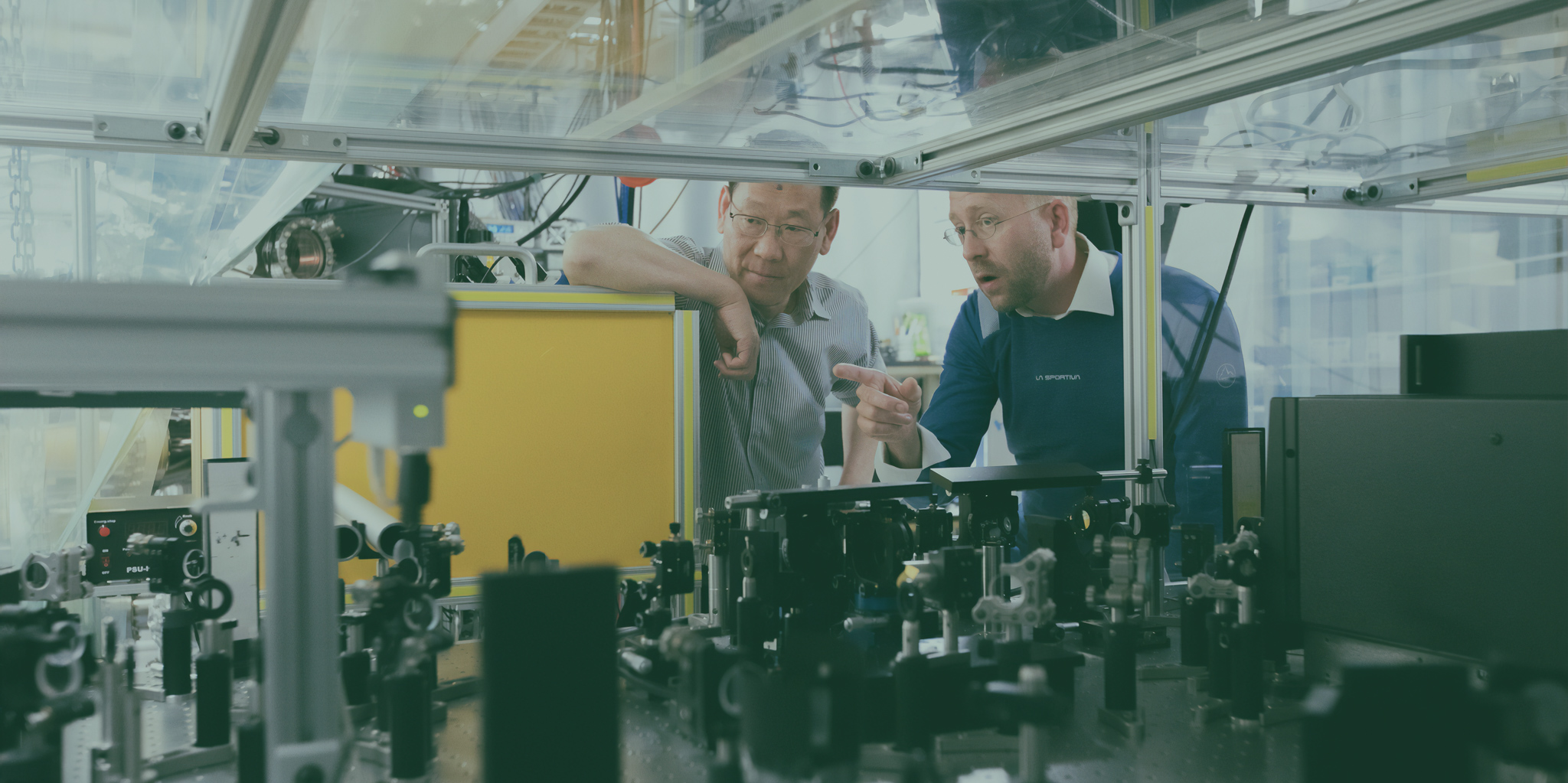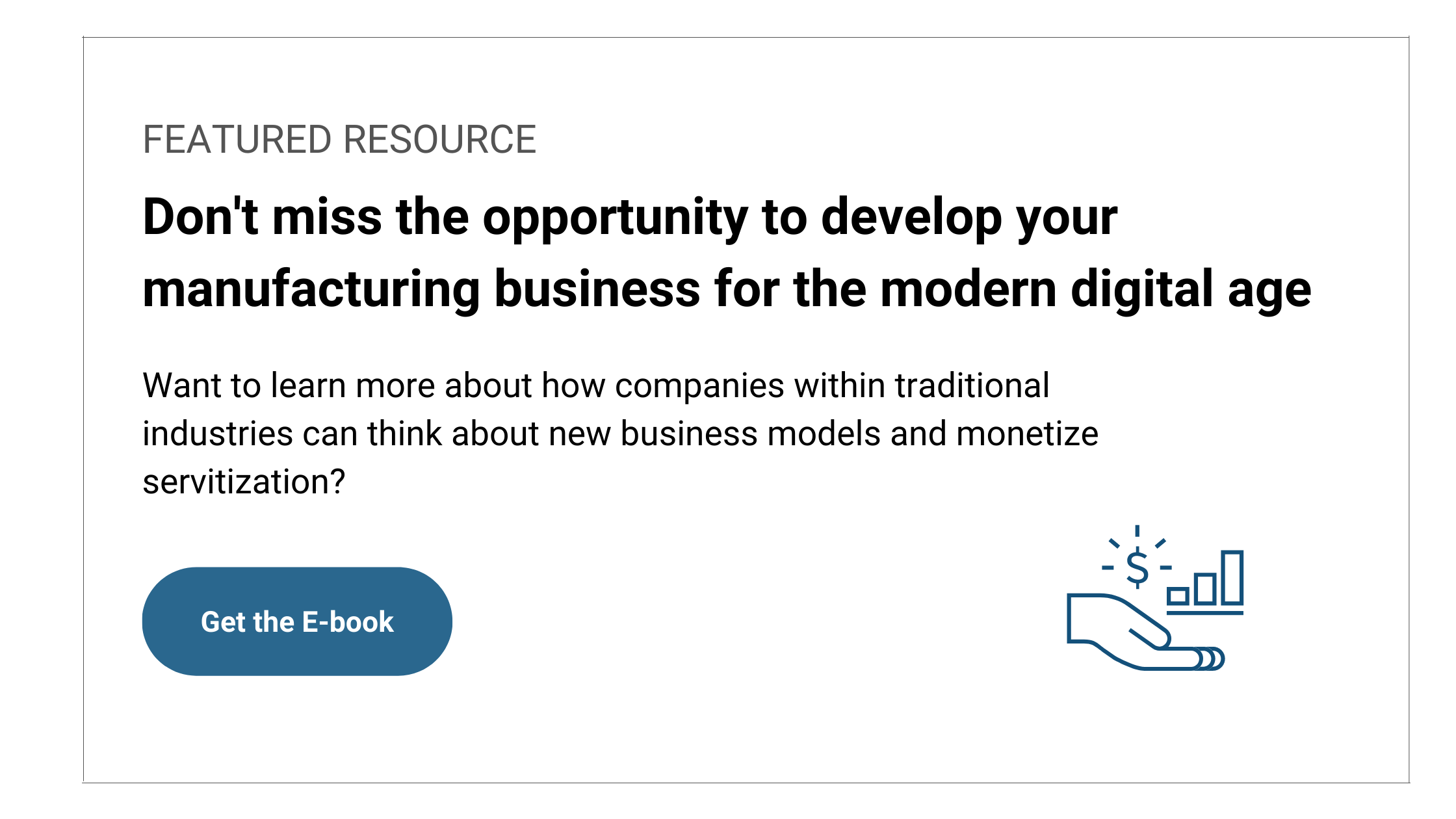What is servitization in the manufacturing industry?
As digitalization takes hold, manufacturers must be looking to new ways of implementing servitization for new business and customer relationships.

As with almost every industry, manufacturing today looks very different than it did even 10 or 20 years ago. With new technology like automation and AI, there is less reliance on human production, and more reliance on digital means for making business more efficient and scalable. But what manufacturing companies can do now, is leverage these changes that have been happening internally, and deploy them to consumers for different and better customer experiences - or rather - servitization.
Extending offerings beyond the product
So what is servitization exactly? It is the concept of traditional product manufacturers adding service elements through digital methods for customers. This can be implemented in a few different ways, but ultimately what it means is that no company just sells "things" anymore - you need to also be thinking about how you sell services.
For manufacturing companies, these "services" will not be stand-alone. They are supplemental to the products sold, as a way to make them more valuable. The result is that customers become more engaged (as opposed to those who make one-time purchases), feel more appreciated (through better support systems) and become more trusting (because you are proving reliability through follow-up).
Extending your offerings beyond the typical scope of physical products presents new opportunities in business, new avenues for profitability, motivates customer loyalty, and ensures the longevity of companies who may be fearful of obsoletion.
Focusing on customer service and retention
What servitization comes down to is an adaptation for changing consumer wants, needs, tastes, and values. Increasingly, all types of companies must continually prioritize customer service as a way to capture and retain sales. But this also means that manufacturers may need to completely reconsider their entire business models.
The auto industry, for example, has seen slowing new sales for several years, with 2019 being the worst performing year since the 2008 financial crisis. Rather than becoming bystanders of their own demise, many auto brands have looked to how they can adapt. Volvo, for example, launched their car sharing company Sunfleet, as an answer to a growing populace who do not wish to own a car, but want access to one easily and cheaply (for personal cost reduction as well as a growing consciousness around sustainability, among other reasons). This opportunity means Volvo is not only in the business of manufacturing and selling cars, they have become a company deeply established in the service industry.
Making it possible with Industry 4.0 and IoT
Digitalization makes servitization possible. When it comes to manufacturing, this is done through the Internet of Things (IoT) and the new era of Industry 4.0. What this means, is that increasingly machinery, production, and traditional hardware products themselves are becoming digitized and "connected."
While the advantages of connected machinery are numerous when it comes to improving efficiency and scalability of production, there are other external benefits that come from the implications of Industry 4.0. The addition of digital components to hardware is what allows traditional companies to look to servitization. This is how you can leverage data and user/customer information, to provide more personalized experiences, new service offerings alongside products, and ensure performance and maintenance challenges are addressed in real time.
Servitization can look different for different types of companies, but there is one underlying truth: digitization is a huge advantage for manufacturing companies, and something to be considered closely.
